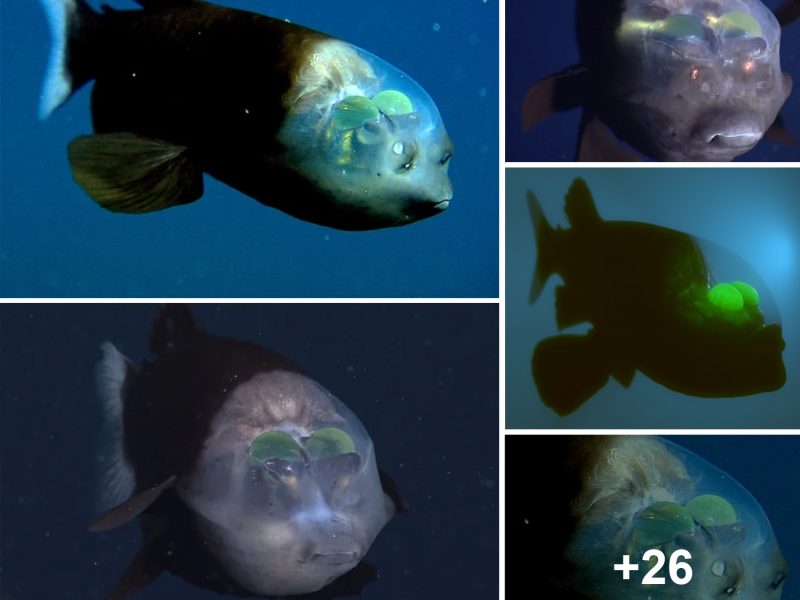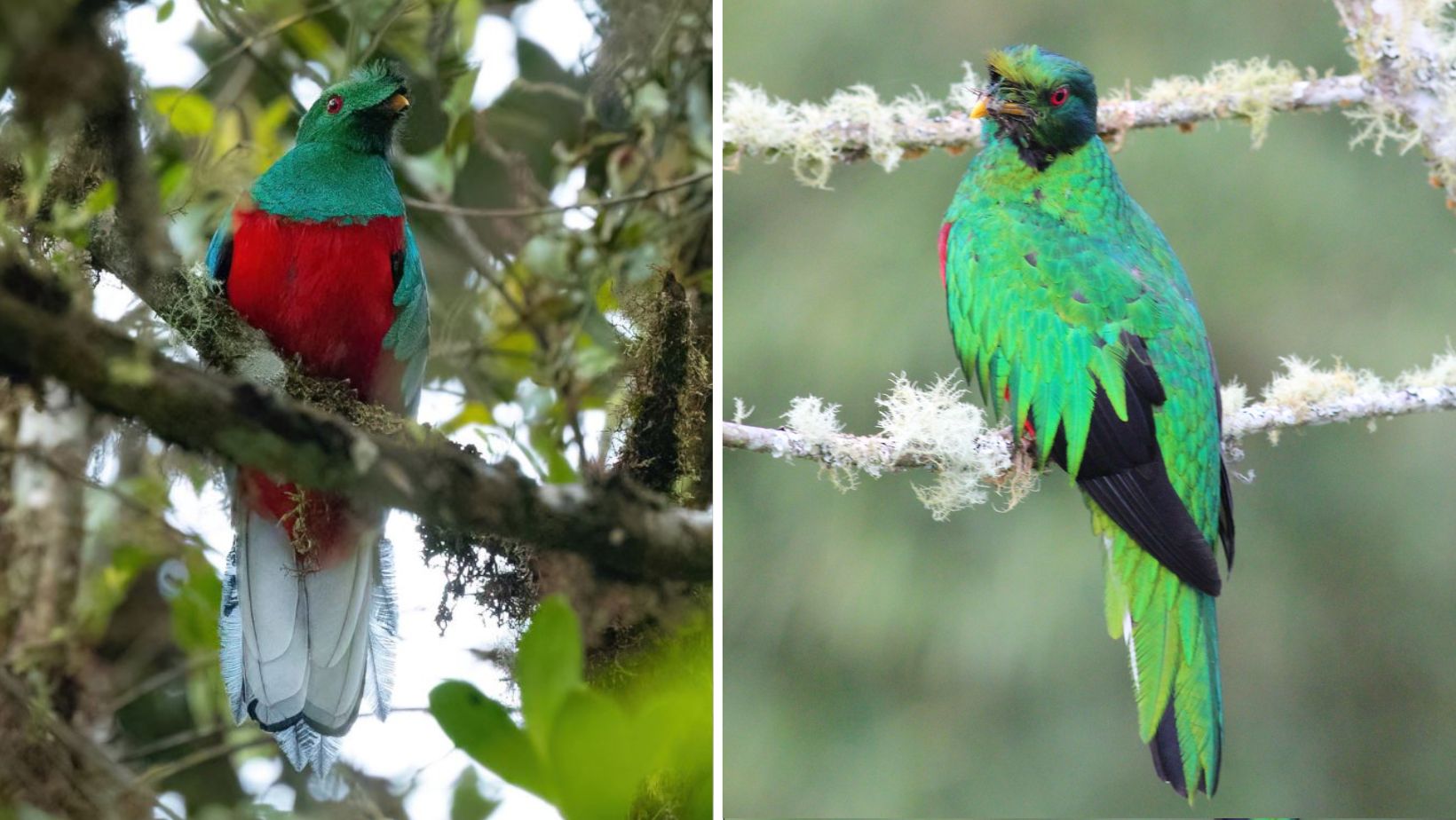
A shimmering emerald above with a garnet-like red belly shines above all else in the could forest!
Meet the Crested Quetzal
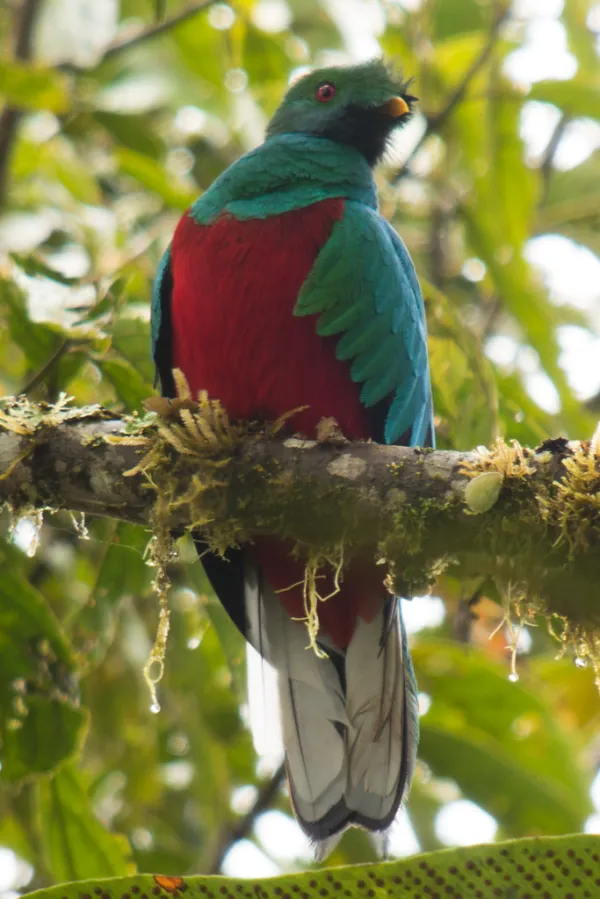 “Crested Quetzal” by Eric Gropp is licensed under CC BY 2.0.
“Crested Quetzal” by Eric Gropp is licensed under CC BY 2.0.
The crested quetzal, (Pharomachrus antisianus), is first described by French naturalist Alcide d’Orbigny in 1837 as Trogon antisianus, the species name is derived from “Antis,” a Latinized version of the Andes, originating from the Incan word “anti,” meaning copper. This beautiful bird is closely related to the resplendent quetzal (P. mocinno) and is one of five species belonging to the Pharomachrus genus, all collectively referred to as quetzals. Originally, the term “quetzal” was used exclusively for the resplendent quetzal, but it now encompasses all members of the Pharomachrus and Euptilotis genera. The adult male crested quetzal measures around 33–34 cm (13–13+1⁄2 in) in length. Its head and upperparts gleam with a metallic green sheen, while its breast and belly boast a striking red coloration. Uniquely among quetzals, the male possesses a short crest above its orange bill.
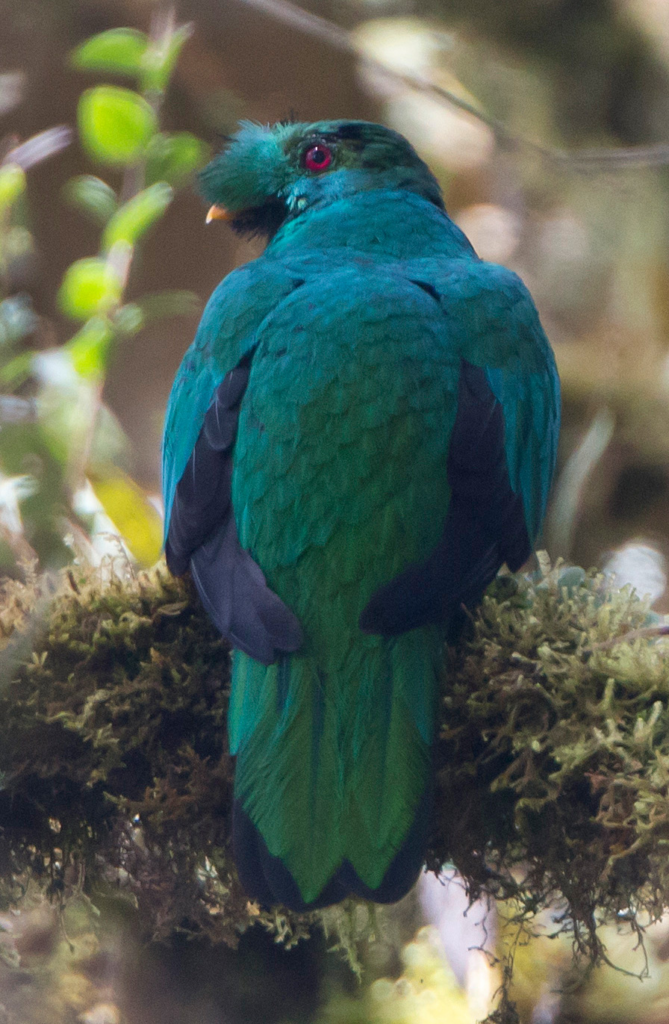 “File:Crested Quetzal.jpg” by Gary L. Clark is licensed under CC BY-SA 4.0.
“File:Crested Quetzal.jpg” by Gary L. Clark is licensed under CC BY-SA 4.0.
In contrast, females have brown heads and upper breasts without a crest.
Scientifically known as Pharomachrus antisianus, the crested quetzal, is a captivating bird belonging to the Trogonidae family native to South America.
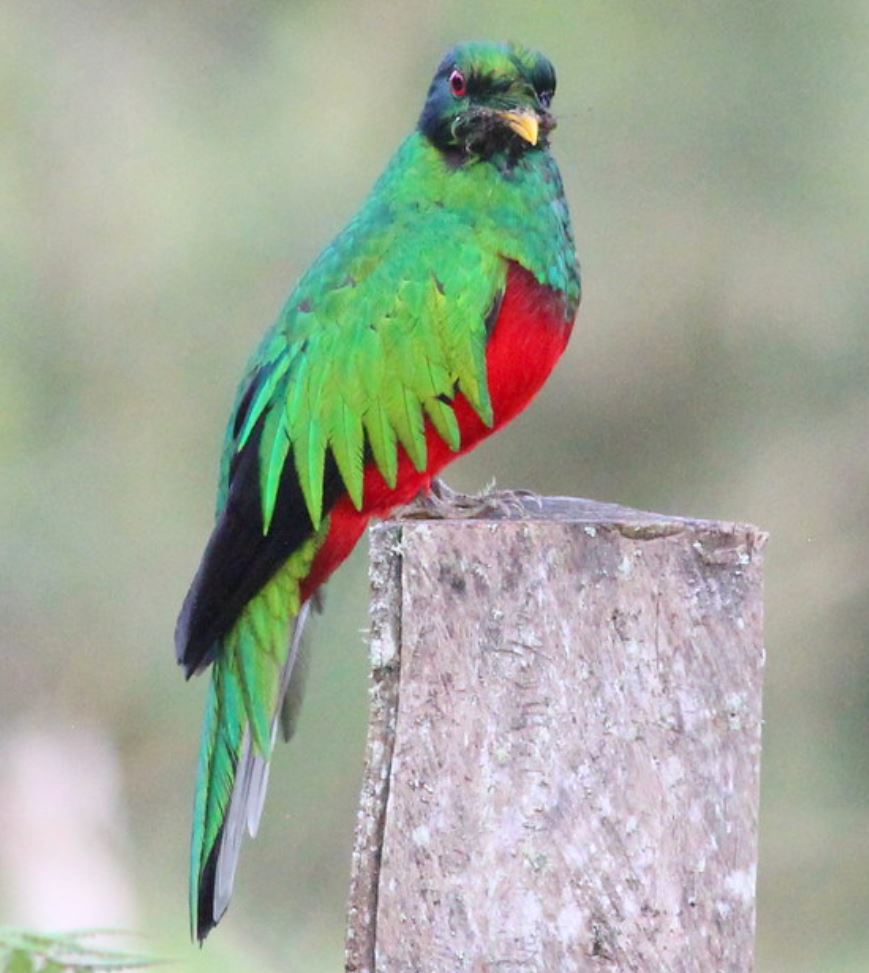 “IMG_1657” by gary_leavens is licensed under CC BY-SA 2.0. (cropped)
“IMG_1657” by gary_leavens is licensed under CC BY-SA 2.0. (cropped)
It can be found in the countries of Bolivia, Colombia, Ecuador, Peru, and Venezuela, primarily inhabiting subtropical or tropical moist montane forests.
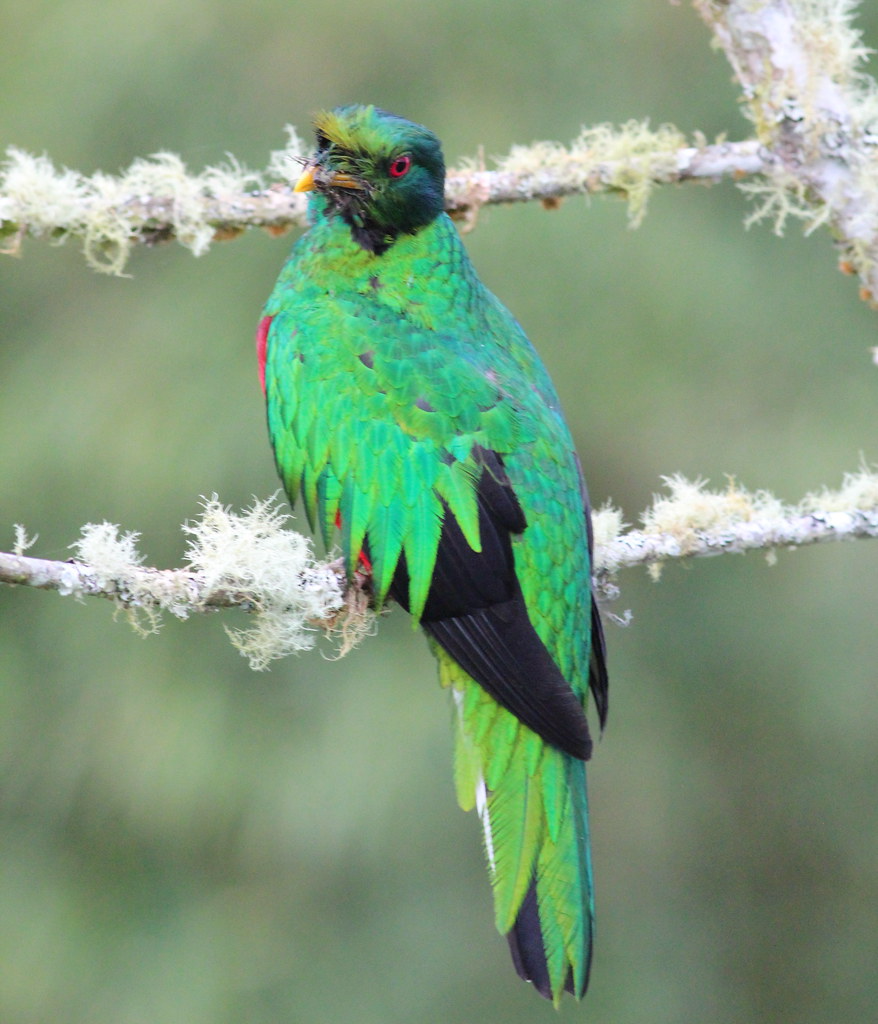 “IMG_1583” by gary_leavens is licensed under CC BY-SA 2.0.
“IMG_1583” by gary_leavens is licensed under CC BY-SA 2.0.
This remarkable bird thrives in the Andes region, ranging from Bolivia to Venezuela, where it prefers pristine and mature second-growth forests at elevations between 1,200 and 3,000 m (4,000 and 10,000 ft) above sea level.
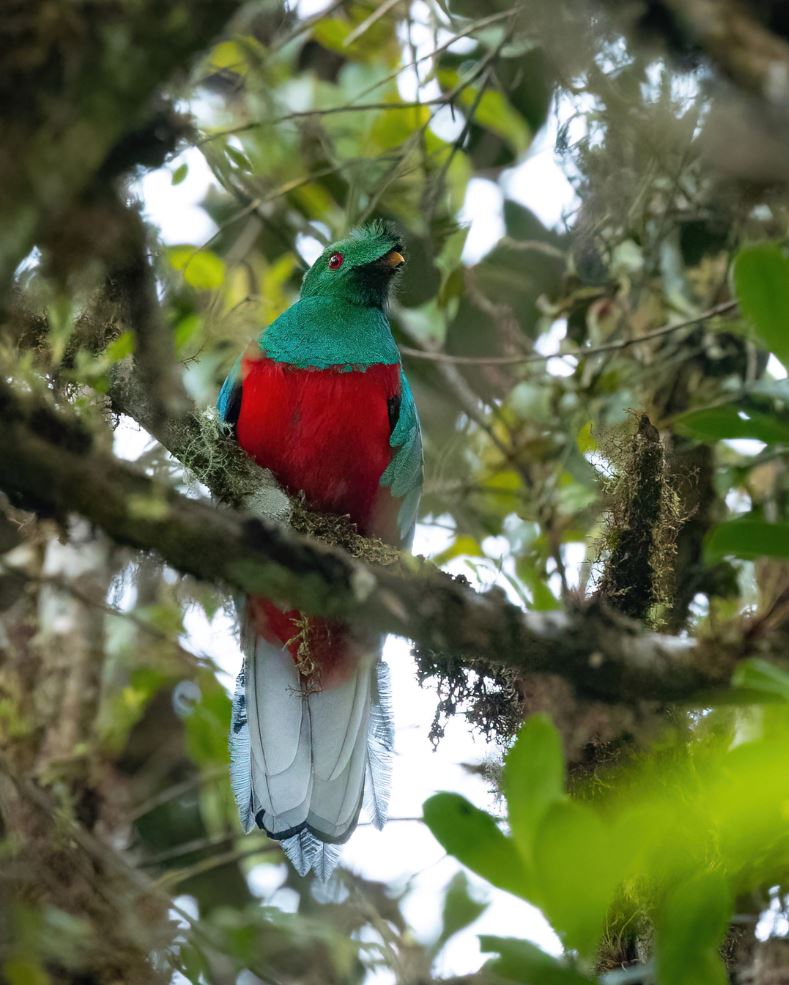 “crested quetzal, quetzal antisien, quetzal crestado, quetzal-de-crista” by thibaudaronson is licensed under CC BY-SA 4.0. (cropped)
“crested quetzal, quetzal antisien, quetzal crestado, quetzal-de-crista” by thibaudaronson is licensed under CC BY-SA 4.0. (cropped)
As a frugivorous creature, the crested quetzal primarily feeds on fruits. Wild avocados hold a special place in the quetzal’s diet, as they are the bird’s favorite food, particularly during the breeding season. However, when raising young, adults also seek out more nutritious prey such as arthropods and small vertebrates, with occasional findings like the glass frog species Hyalinobatrachium pallidum.
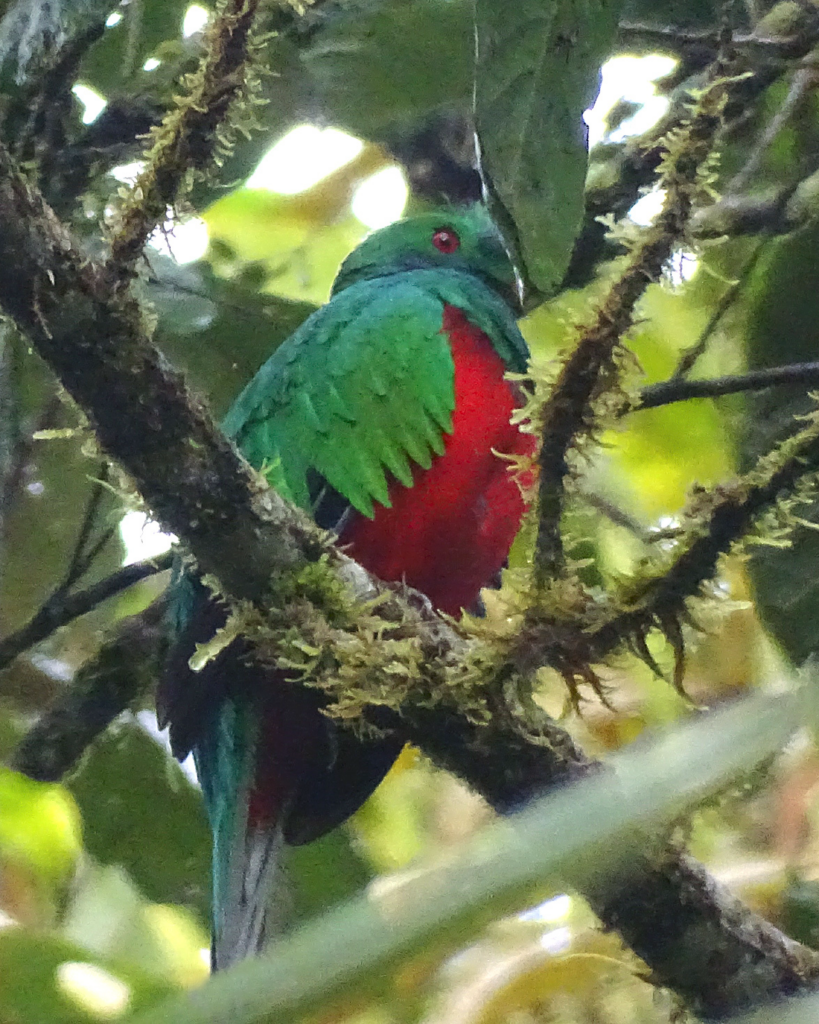 “crested quetzal, quetzal antisien, quetzal crestado, quetzal-de-crista” by noverholtz is licensed under CC BY-SA 4.0.
“crested quetzal, quetzal antisien, quetzal crestado, quetzal-de-crista” by noverholtz is licensed under CC BY-SA 4.0.
Quetzals exhibit an intriguing nesting behavior, as they rear their young in tree holes. However, due to their relatively weak beaks, they are unable to bore into live wood. Instead, they take advantage of holes initially created by woodpeckers or toucans in standing dead trunks, enlarging these openings to suit their needs. Unfortunately, finding suitable nesting trees becomes challenging in the cloud forests where they reside, given the combination of thin soil, heavy rainfall, strong winds, and rapid rates of decay, making appropriate nesting sites scarce and short-lived. Additionally, frequent mild earthquakes further complicate their nesting habitat. In Costa Rica’s cloud forests, the quetzal’s breeding season (and best viewing opportunity) occurs from mid-February to June or July, aligning with the time when wild avocado trees and other fruit-bearing trees from the laurel family (Lauraceae) are in fruiting season. During this time, the quetzal parents carve a hole in a partially decomposed standing tree, where the female lays one or two blue eggs, and both parents take turns incubating them.
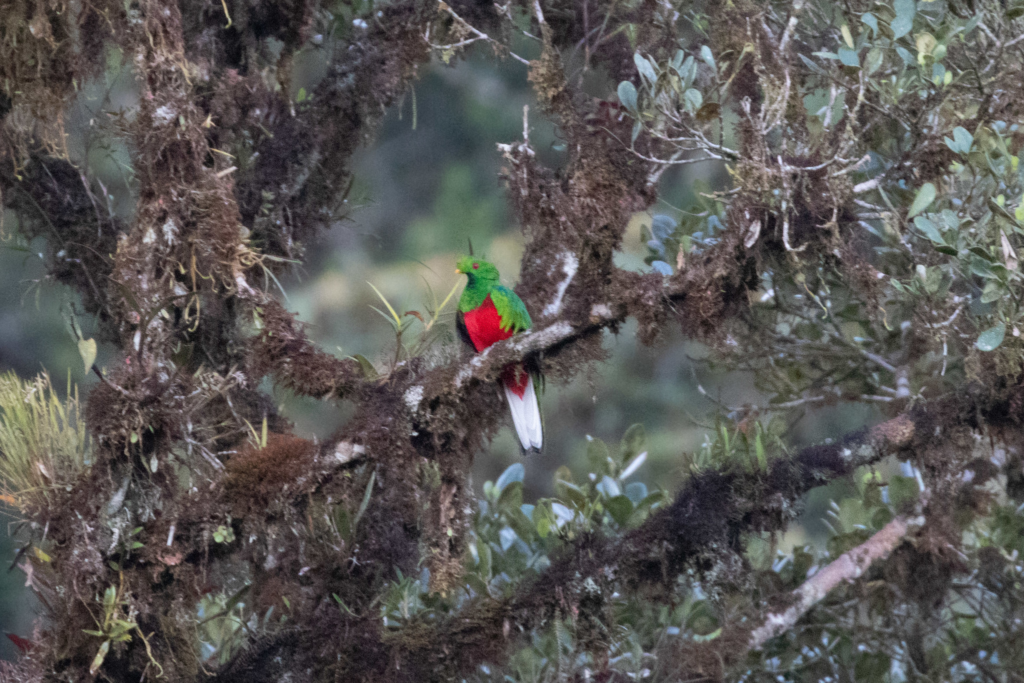 “crested quetzal, quetzal antisien, quetzal crestado, quetzal-de-crista” by thibaudaronson is licensed under CC BY-SA 4.0.
“crested quetzal, quetzal antisien, quetzal crestado, quetzal-de-crista” by thibaudaronson is licensed under CC BY-SA 4.0.
Thanks to its extensive range and stable population, the crested quetzal has been categorized as least concern on the IUCN Red List of Threatened Species.
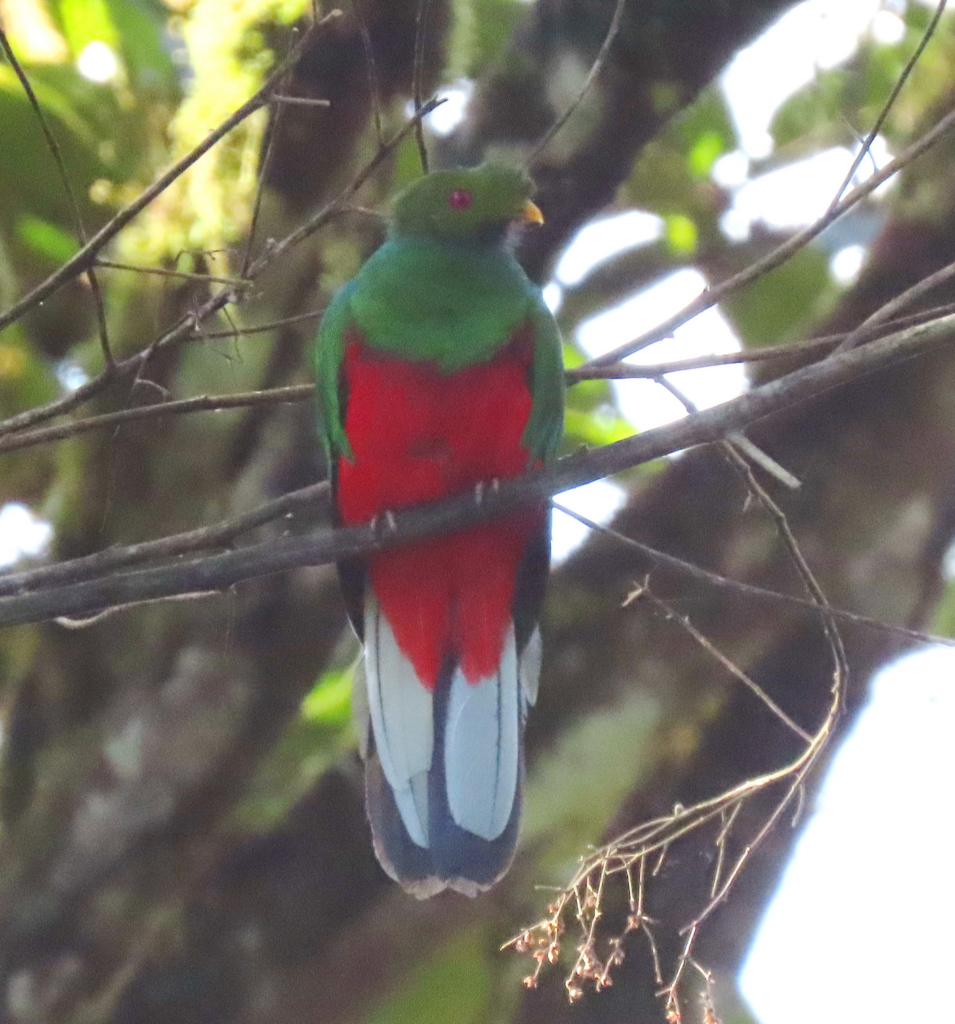 “crested quetzal, quetzal antisien, quetzal crestado, quetzal-de-crista” by Paul Bedell is licensed under CC BY-SA 4.0.
“crested quetzal, quetzal antisien, quetzal crestado, quetzal-de-crista” by Paul Bedell is licensed under CC BY-SA 4.0.
Listen to this bird below:
This article uses material from Wikipedia.org which is licensed under the GNU Free Documentation License via Copyright Wikipedia. Images on this page are the sole property of the photographers (unless marked as Public Domain). Please read the license and or contact the photographers directly before using them for any purpose. Thank you all.
A Highly Distinctive, Sadly Uncommon Sprite Wearing A Wonderfully Luminous Forecrown!
Please SHARE this article with all your bird-loving friends and family.

